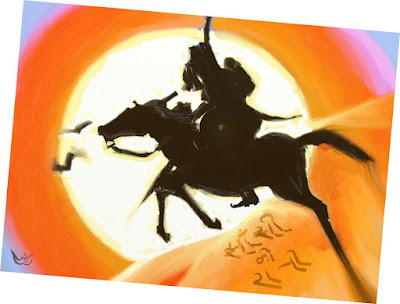Rani Laxmi bai, popularly known as ‘Rani of Jhansi’ or ‘Rani Lakshmi Bai’, was born on November 19, 1835 at Poona in a wealthy Brahmin family. She got married to Raja Gangadhar Rao, the maharaja of Jhansi, in 1842. In 1851, she gave birth to a child who unfortunately died just four months after his birth. Being highly affected by this tragic incident Raja adopted Damodar Rao as his son. Even after that he was unable to come out of the tragedy of losing his son and ultimately died on November 21, 1853. Rani had faced great tragedies in life; she lost her mother at a very young age and then her husband at the age of eighteen. But, no tragedy was able to break her apart and courageously she took over all her responsibilities.
After the death of Raja of Jhansi, Lord Dalhousie, the Governor General of India, planned to annex Jhansi on the ground that it did not have any legal heir. Britishers refused to accept Damodar as the legal heir of Jhansi and in 1854, Rani of Jhansi was ordered to leave the fort after giving a pension of 60,000.
Being a patriotic Indian woman, Rani Laxmi Bai was not willing to give the dominion of Jhansi to Britishers and called for an armed force. She successfully assembled an army of rebellions including women and was supported by many freedom fighters like Gulam Gaus Khan, Dost Khan, Khuda Baksh, Sunder-Mundar, Kashi Bai, Lala Bhau Bakshi, Moti Bai, Deewan Raghunath singh and Deewan Jawahar Singh.
In March 1858, Britishers attack on Jhansi forced Rani Lakshmi Bai’s army to fight back for the defense of the city. The war continued for two weeks but unfortunately Britishers were successful in extending their empire. Under the cover of darkness Rani along with her son and army of rebellions rode to Gwalior where again a battle was fought. The second day of the war in Gwalior unfortunately turned to be the last day of Rani’s life. Bravely fighting for India’ freedom, she died on June 18, 1858.
INDIAN FREEDOM FIGHTER - JHANSI KI RANI LAXMI BAI
Rani Lakshmi Bai became a national heroine and was seen as the epitome of female bravery in India. When Subhas Chandra Bose's Indian National Army created its first female unit, it was named after her.
Indian poetess Subhadra Kumari Chauhan (1904–1948) wrote a poem titled Jhansi Ki Rani in the Veer Ras style about her, which is still recited by children in schools of contemporary India. Original Hindi text:
सिंहासन हिल उठे राजवंशों ने भृकुटी तानी थी,
बूढ़े भारत में आई फिर से नयी जवानी थी,
गुमी हुई आज़ादी की कीमत सबने पहचानी थी,
दूर फिरंगी को करने की सबने मन में ठानी थी।
चमक उठी सन सत्तावन में, वह तलवार पुरानी थी,
बुंदेले हरबोलों के मुँह हमने सुनी कहानी थी,
खूब लड़ी मर्दानी वह तो झाँसी वाली रानी थी।।
English translation :
The thrones shook and royalties scowled
Old India was re-invigorated with new youth
People realised the value of lost freedom
Everybody was determined to throw the foreigners out
The old sword glistened again in 1857
This story we heard from the mouths of Bundel bards
Like a man she fought, she was the Queen of Jhansi












she was really a breave lady....she is like a god for me....i always take her name everyday when i pray to god....harish
ReplyDelete